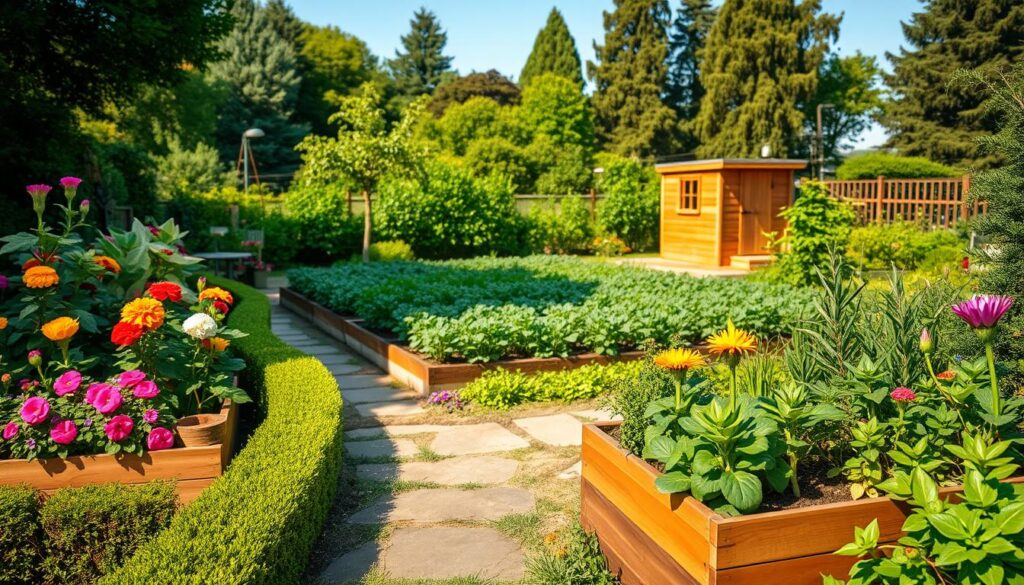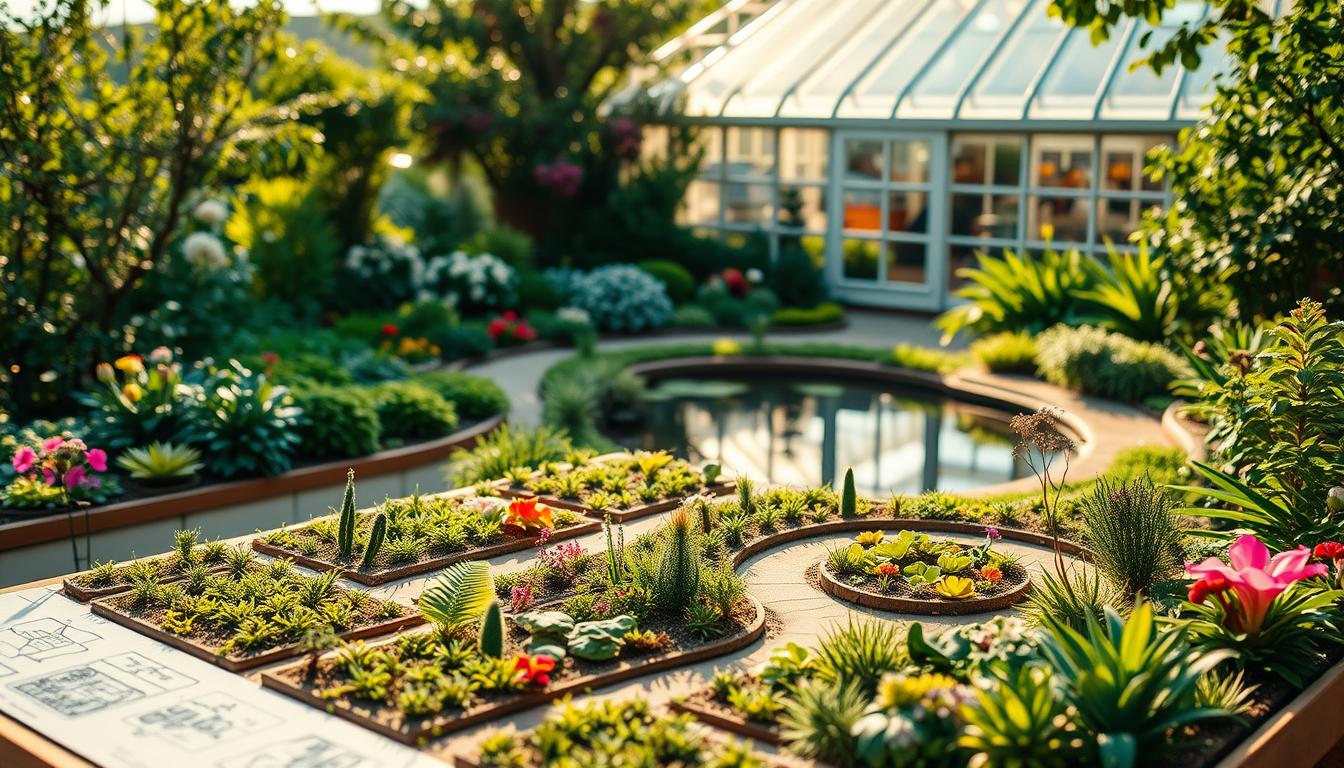Planning your outdoor space can be both exciting and rewarding. A well-organized approach ensures you make the most of every season. Whether you’re a beginner or an experienced gardener, using a garden planner can simplify the process.
With printable tools, you can track planting schedules, create shopping lists, and even jot down creative ideas. These planners are designed to help you stay on top of your tasks throughout the year. From winter preparations to spring planting, every step becomes more manageable.
Many gardeners find joy in flipping through seed catalogs and journaling their progress. Adding personal touches like stickers or washi tape can make the experience even more enjoyable. A garden planner isn’t just a tool—it’s a way to connect with nature and nurture your creativity.
Key Takeaways
- Simplify your gardening tasks with a structured planner.
- Track planting schedules and shopping lists effortlessly.
- Enjoy year-round organization with seasonal tracking sections.
- Personalize your planner with creative touches like stickers.
- Connect with nature and enhance your gardening experience.
Why You Need a Garden Planner
Maximizing your harvest starts with careful preparation. A well-structured approach ensures you avoid costly mistakes, like frost-damaged seedlings. Tools like frost date calculators can save you hundreds of dollars annually by protecting your plants.
Time-saving features, such as automated planting reminders, help you stay on track. Visual layout tools optimize space, ensuring every inch of your outdoor area is used efficiently. This is especially helpful for first-time gardeners who may feel overwhelmed.

Integration with USDA hardiness zones ensures your plants thrive in the right conditions. Companion planting guides naturally deter pests, while succession planting strategies provide continuous harvests throughout the season.
Tracking your seed inventory prevents overbuying and ensures you have what you need for the year. A case study of a beginner gardener showed how using a planner helped them overcome initial challenges and achieve a bountiful crop.
With these tools, you can focus on enjoying the process rather than stressing over details. A planner isn’t just about organization—it’s about making the most of your time and resources.
Top Free Garden Planners to Try
Exploring tools to organize your outdoor space can make a big difference. Whether you’re growing herbs, seeds, or seedlings, these planners offer unique features to help you succeed. Let’s dive into three popular options that cater to different needs.

Gardeners Supply Company – Kitchen Garden Planner
This tool uses a square-foot grid system, perfect for optimizing small spaces. It includes a soil calculator for raised beds, ensuring your plants get the nutrients they need. The grid-based interface makes it easy to visualize your layout and track progress.
Smart Gardener – Free Demo Planner
Smart Gardener stands out with its family-size customization features. It generates an automated shopping list, saving you time and effort. The platform also offers detailed pages on companion planting, helping you naturally deter pests.
Better Homes and Gardens – Plan-A-Garden
For those who love visuals, Plan-A-Garden offers a 3D design interface. With over 250 plant varieties, you can create a detailed layout tailored to your climate. The tool’s filtering system ensures you choose the right plants for your region.
Each of these planners has unique strengths, making it easier to plan garden projects effectively. For more tips on organizing your outdoor space, visit New Gen Living.
How to Use a Garden Planner Effectively
Effective organization can transform your planting experience. A structured system helps you track progress, manage seeds, and ensure your plants grow healthy. Here’s how to make the most of your tools.

Start by calculating frost dates using ZIP code tools. This ensures you plant at the right time and avoid frost damage. Next, use color-coded zone mapping to visualize your layout. This way, you can optimize space and ensure each plant thrives.
Companion planting is another great strategy. Pairing compatible plants naturally deters pests and boosts growth. For example, planting basil near tomatoes improves flavor and repels insects. Staggered planting, like sowing lettuce every 2-3 weeks, ensures a continuous harvest throughout the year.
Organize your pages with page protectors in a binder. This keeps your details safe and easy to access. Include seed inventory charts to keep track of what you have and what you need. This prevents overbuying and saves time.
Follow this 4-step process:
- Set clear goals for your planting.
- Choose the right plants for your climate.
- Create a detailed schedule for planting and care.
- Map out your layout for optimal space usage.
For challenging areas like shady spots or poor soil, try techniques like “lasagna gardening.” This layering method improves soil quality over time. Adding weather tracking sections can also help you adapt to microclimates in your outdoor space.
With these tips, you’ll stay organized and enjoy a successful planting season. Whether it’s spring or any other time of the year, a well-structured system makes all the difference.
Benefits of Using a Garden Planner
A structured approach to planting can lead to impressive results. Whether you’re growing plants for food or beauty, staying organized ensures you make the most of your efforts. A well-designed system helps you keep track of tasks, schedules, and resources, making the process smoother and more enjoyable.

Improved Crop Yield
One of the biggest advantages is the potential for increased harvests. Studies show that using crop rotation plans can triple your crop yield. Companion planting strategies also reduce pest issues by up to 80%, ensuring your plants stay healthy.
For example, rotating tomatoes with beans naturally enriches the soil and prevents diseases. Staggered planting of seeds like lettuce ensures a continuous supply throughout the year. These techniques not only boost productivity but also save time and effort.
Stay Organized and Informed
Weekly checklists reduce forgotten tasks by 67%, keeping you on top of your planting schedule. Seed inventory audits prevent overbuying and save money. Centralized information reduces stress, allowing you to focus on the joy of planting.
Vertical planting guides maximize space, especially in small areas. Testimonials highlight how staying organized boosts creative confidence and mental well-being. Academic studies also link gardening productivity to improved overall life satisfaction.
| Benefit | Impact |
|---|---|
| Increased Harvests | 3x yield with crop rotation |
| Pest Reduction | 80% fewer issues with companion planting |
| Task Management | 67% fewer forgotten tasks |
| Space Optimization | Vertical planting saves space |
By using a structured system, you can transform your planting experience. From healthier plants to a more organized way of working, the benefits are clear. Start planning today and see the difference it makes in your outdoor space.
Tips for Choosing the Right Garden Planner
Finding the perfect system to manage your planting tasks is easier than you think. Whether you prefer mobile apps or desktop tools, there’s a solution for everyone. Start by assessing your needs to ensure you pick the right fit.
Consider accessibility. Mobile-friendly options let you update details on the go, while desktop versions offer more robust features. Printable formats are great for hands-on users, but cloud-based systems sync across devices for convenience.

- Do I need frost date reminders?
- Is a visual layout tool important?
- Should it include USDA zone compatibility?
- Do I prefer a binder or an app?
- Are community features like VegPlotter useful?
Binder users often enjoy the tactile experience, while app users value automation. Test at least three systems before committing. This helps you find the best match for your life and workflow.
Watch out for hidden costs in “freemium” models. Some tools offer basic features for free but charge for advanced options. Always read the fine print to avoid surprises.
Here’s a checklist of must-have features:
| Feature | Importance |
|---|---|
| Frost Dates | Essential for timing |
| Visual Layout | Optimizes space |
| Reminders | Keeps you on track |
| USDA Zones | Ensures plant compatibility |
Combo systems, like printable pages paired with apps, offer flexibility. They’re ideal for users who want both digital and physical options. Community features, such as those in VegPlotter, provide support and inspiration.
Finally, check copyright restrictions if you plan to use the tool for commercial purposes. Some systems limit how you can share or reproduce their content. By following these tips, you’ll find the perfect system to enhance your garden planning experience.
Conclusion
Organizing your outdoor space can save you time and effort while boosting your results. By using the right tools, you can avoid costly mistakes and enjoy a thriving season after season. Starting small with one or two features can make the process less overwhelming.
Think about your long-term goals. A well-structured system helps you track progress and adapt to changes over the year. Whether it’s spring planting or winter preparations, staying organized ensures your plants grow healthy and strong.
Don’t forget to explore companion planting charts and other bonus resources. These can enhance your experience and inspire new ideas. Sign up for our newsletter to access helpful tips and tools tailored to your needs.
Take the first step today. Imagine what your outdoor space could look like in five years. With a little planning, you can create a beautiful and productive area that brings joy to your life.

